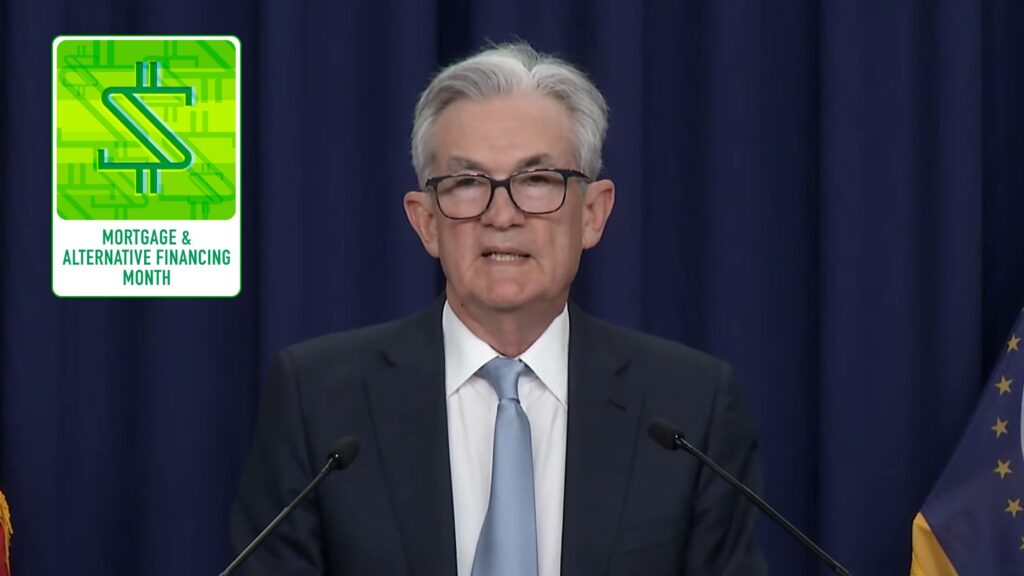Purchase mortgage applications are still down 10% from a year ago, with mortgage rates nearly doubling in the last 12 months, according to a survey by the Mortgage Bankers Association.
In June, we’re going deeper on mortgage and title — looking at where the mortgage market is headed, how products are evolving and alternative financing options changing the game. Join us for Mortgage and Alternative Financing Month. And subscribe to Inman’s Extra Credit for weekly updates all year long.
Demand for purchase loans continued to rebound last week as mortgage rates retreated from their 2022 peak, with smaller loan requests hinting that home price appreciation may be cooling, according to a weekly survey of lenders by the Mortgage Bankers Association.
During the week ending June 17, purchase mortgage applications were up a seasonally adjusted 8 percent when compared to the week before, the MBA Weekly Mortgage Applications Survey found.
With mortgage rates now nearly double where they were a year ago, applications to refinance existing mortgages were down 3 percent week-over-week and 77 percent from a year ago, said MBA forecaster Joel Kan, while requests for adjustable-rate mortgages (ARMs) accounted for 10.6 percent of total applications

Joel Kan
“Purchase applications increased for the second straight week – driven mainly by conventional applications – and the ARM share of applications jumped back to over 10 percent,” Kan said, in a statement. “However, purchase activity was still 10 percent lower than a year ago, as inventory shortages and higher mortgage rates are dampening demand. The average loan size, at just over $420,000, is well below its $460,000 peak earlier this year and is potentially a sign that home price-growth is moderating.”
Mortgage rates level off
According to the Optimal Blue Mortgage Market Indices, rates on 30-year fixed-rate mortgages have leveled off since surging past 6 percent and hitting a 2022 peak of 6.056 percent on June 14.
Mortgage rates have been on the rise this year, after the Federal Reserve gradually withdrew the support it provided to the economy during the pandemic and began tightening monetary policy to fight inflation. Having wound down a “quantitative easing” program that, at its peak, had the central bank buying more than $120 billion in bonds and mortgage backed securities each month, Fed policymakers are now simultaneously raising short-term interest rates and trimming the Fed’s nearly $9 trillion balance sheet.
After announcing the biggest short-term rate hike since 1994 on June 15, Federal Reserve Chairman Jerome Powell said homebuyers — particularly young ones, “need a bit of a reset.”
“We need to get back to a place where supply and demand are back together,” Powell told reporters. “And where inflation is down low again and mortgage rates are low again. So this will be a process whereby ideally we do our work in a way that the housing market settles in a new place and housing availability and credit availability are at appropriate levels.”
Long-term rates drop on Powell’s tough inflation talk
In presenting a semiannual report to Congress Wednesday, Powell said that the Fed remains committed to fighting inflation.
Yields on 10-year Treasurys — which are usually a good indicator of where mortgage rates are headed next — dropped to as low as 3.12 percent Wednesday as bond traders reacted to Powell’s remarks. Like mortgage rates, 10-year Treasury yields hit a 2022 peak on June 14, briefly hitting 3.48 percent.
Some inflation hawks have complained that the Fed waited too long to shift its monetary policy stance away from goosing the economy to fighting inflation.
But Sen. Elizabeth Warren, D-Mass., voiced the opposite concern to Powell Wednesday — that continuing to hike short-term rates could “tip this economy into recession” without stopping inflation, CNBC reported.
“You know what’s worse than high inflation and low unemployment is high inflation and a recession with millions of people out of work, and I hope you’ll reconsider that before you drive the economy off a cliff,” Warren said.
After implementing three rate hikes totalling 1.5 percentage points since March 17, the federal funds rate — the rate which banks charge each other for overnight loans — now stands at a target range of 1.5 to 1.75 percent.
According to the CME FedWatch Tool, which monitors futures contracts to calculate the probability of Fed rate hikes, markets are now pricing in a greater-than-even chance that the Fed will raise the benchmark short-term interest rate by at least 2 percentage points over the course of its four remaining meetings this year, which would leave the federal funds rate in a target range of 3.50 to 3.75 percent.
The Fed doesn’t have direct control over long-term interest rate, however, so mortgage rates won’t necessarily keep going up even if the Fed continues to hike the federal funds rate in July, September, November and December.
When the Fed last tried to raise short-term interest rates at a slower pace in 2018, Treasury yields and mortgage rates responded only weakly, before reversing course and moving in the opposite direction.
In a note to clients Wednesday, Pantheon Macroeconomics Chief Economist Ian Shepherdson said his team thinks the Fed will hike the federal funds rate by 50 basis points in July, although a repeat of the drastic 75 basis-point increase implemented in June, “is entirely possible,” he said. A basis point is one-hundredth of a percentage point.
“We expect another 50 basis points in September, but at that point we think the combination of falling inflation, the housing market rollover, and softer manufacturing data, coupled with the tightening of financial conditions due to lower stock prices and wider corporate spreads, will allow the Fed to signal a slowdown to 25 basis points in the final two meetings of the year,” Shepherdson said.
Get Inman’s Extra Credit Newsletter delivered right to your inbox. A weekly roundup of all the biggest news in the world of mortgages and closings delivered every Wednesday. Click here to subscribe.
Email Matt Carter



 Are You Interested in West Eleventh Residences Miami?
Are You Interested in West Eleventh Residences Miami? Are You Interested in ONE Park Tower by Turnberry?
Are You Interested in ONE Park Tower by Turnberry? Are You Interested in Diesel Wynwood Condominium?
Are You Interested in Diesel Wynwood Condominium? Are You Interested in Five Park Miami Beach?
Are You Interested in Five Park Miami Beach? Are You Interested in Cipriani Residences Miami?
Are You Interested in Cipriani Residences Miami? Are You Interested in Bentley Residences Miami?
Are You Interested in Bentley Residences Miami? Are You Interested in Baccarat Residences Brickell?
Are You Interested in Baccarat Residences Brickell? Are You Interested in Aria Reserve Miami?
Are You Interested in Aria Reserve Miami? Are You Interested in 888 Brickell Dolce & Gabbana | Miami?
Are You Interested in 888 Brickell Dolce & Gabbana | Miami? Are You Interested in 600 Miami WorldCenter?
Are You Interested in 600 Miami WorldCenter? Are You Interested in HUB MIAMI RESIDENCES?
Are You Interested in HUB MIAMI RESIDENCES? Are You Interested in WALDORF ASTORIA RESIDENCES?
Are You Interested in WALDORF ASTORIA RESIDENCES?